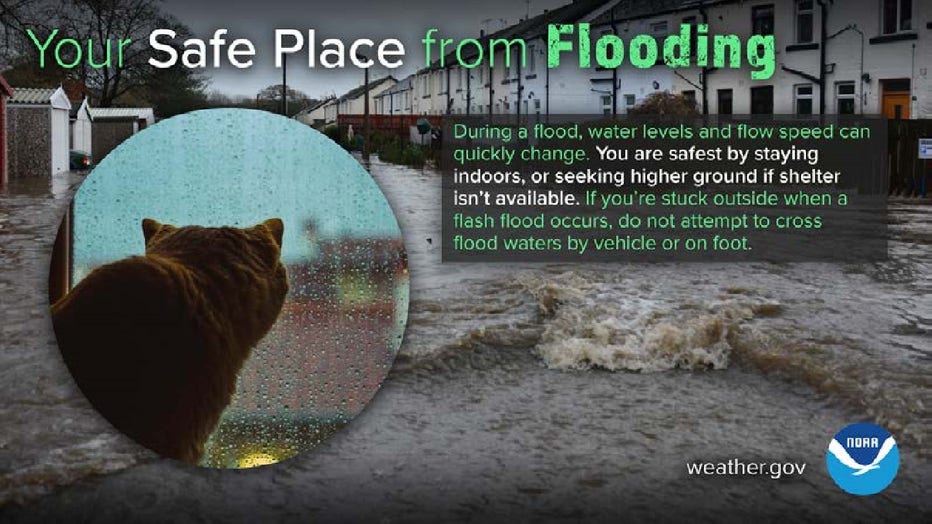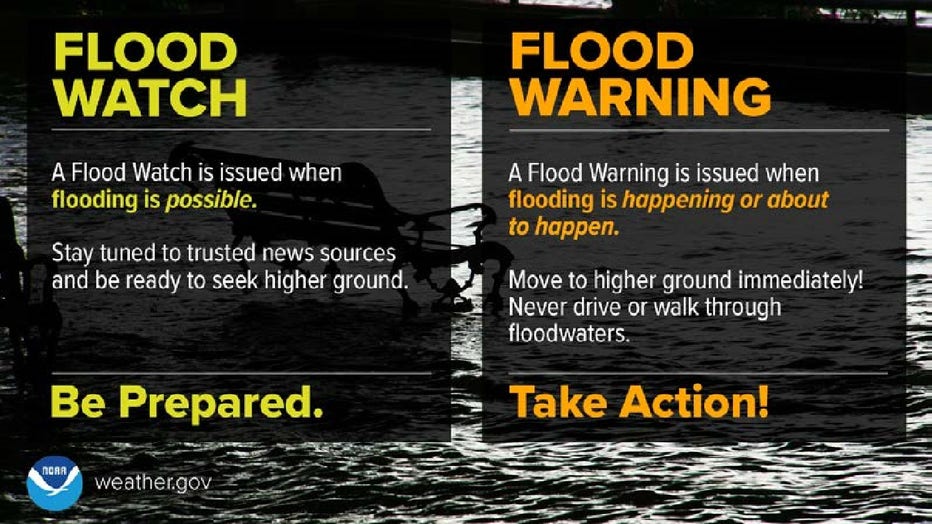Houston Weather: Flooding safety tips from National Weather Service
HOUSTON - Houston has seen its share of flooding events in recent history.
MORE: How to best cover your property against floods
Some of those are tropical in nature like Harvey in 2017, Imelda in 2019, and Allison in 2001, but major flooding events have also happened at other times of the year too like the Tax Day Flood of 2016 and Memorial Day Flood in 2015.
For this reason, the Houston/Galveston Office of the National Weather Service continues its Severe Weather Awareness Week on Day 4 focusing on flood safety.
MORE: National Weather Service to shares safety tips all week-long for Severe Weather Awareness Week
Water has incredible, and during a flood, water levels and the rate at which water is flowing can change rapidly. If your area is experiencing flash flooding or heavy rainfall, the NWS offers these safety tips:
- Never drive into flooded roadways or around barricades. It only takes 6 inches of moving water to knock over an adult, 12 inches to carry away a car, and 18–24 inches to carry away almost any large vehicle.
- Do not play in floodwaters as there are likely pollutants, debris, and wildlife in the waters. There is also the chance of electrocution if there is submerged electrical equipment.
- If floodwaters are quickly approaching you, be sure to get to higher ground. In extreme cases where flood waters are getting into your house, do not climb into your attic, but get onto your roof where rescuers will get to you easier.
DAY 1 SAFETY TIPS: Heat safety tips from the National Weather Service
During a flood, water levels and the rate at which water is flowing can quickly change.
You are the safest staying indoors, or seeking higher ground if the shelter isn’t available. If you’re stuck outside when a flash flood occurs, do not attempt to cross floodwaters by vehicle or on foot.

(Photo courtesy of National Weather Service)
Flooding can occur during any time of the year. As a result, it’s always best to be prepared!
DAY 2 SAFETY TIPS: Thunderstorm safety tips from the National Weather Service
Make sure to enable Wireless Emergency Alerts on your phone. If flooding occurs while you’re outdoors, immediately get to higher ground, and do not ever enter floodwaters in a vehicle or on foot.

(Photo courtesy of National Weather Service)
Do you know the difference between a Flood Warning and a Flood Watch? A Flood Warning means TAKE ACTION. A Flood Watch means BE PREPARED.

(Photo courtesy of National Weather Service)
When a Warning occurs, it means flooding is imminent or already occurring. When a Flood Watch is in effect, it means flooding is possible in your area.
DAY 3 SAFETY TIPS: Tornado safety tips from National Weather Service
You wouldn't drive through a tornado or fire, so, why risk your life by driving through flood roadways? Don’t underestimate the power of water, as it doesn't take much to sweep you or your car away.
Floodwaters can be VERY difficult, if not impossible, to see at night. Always use extra caution when driving, do NOT drive around barricades, and stay informed with your local authorities.
SUGGESTED: Why flood-weary Houston needs more willow water holes
Flood events can devastate communities. Help yours be prepared and safe. Connect with your neighbors and discuss local flood risks and planning needs.
DOWNLOAD THE FOX 26 WEATHER APP
If flooding is expected, help others elevate and protect their belongings. After the storm, check on your neighbors and keep others out of floodwater.


